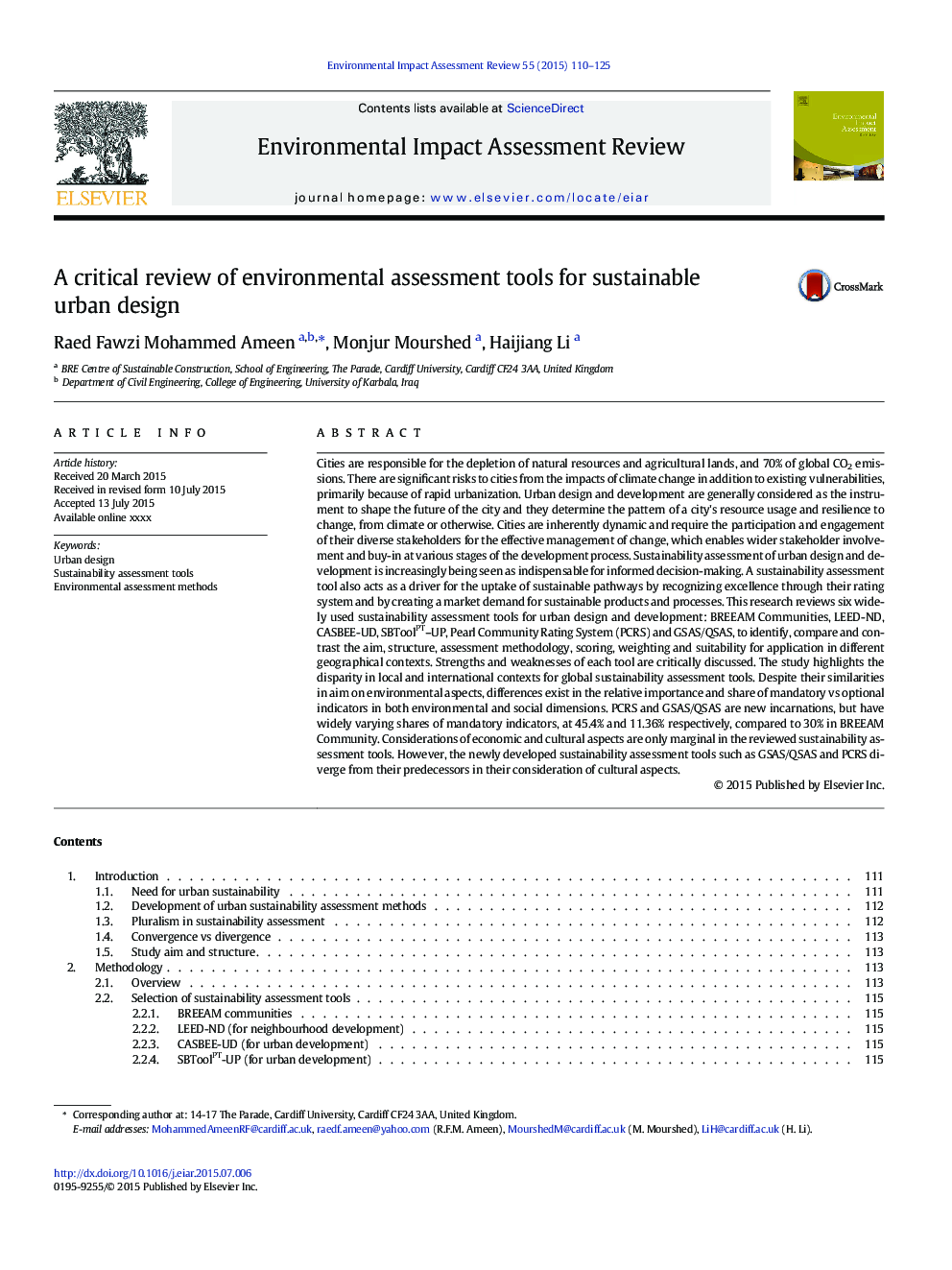| کد مقاله | کد نشریه | سال انتشار | مقاله انگلیسی | نسخه تمام متن |
|---|---|---|---|---|
| 7465247 | 1484990 | 2015 | 16 صفحه PDF | دانلود رایگان |
عنوان انگلیسی مقاله ISI
A critical review of environmental assessment tools for sustainable urban design
ترجمه فارسی عنوان
بررسی انتقادی ابزار ارزیابی محیط زیست برای طراحی شهری پایدار
دانلود مقاله + سفارش ترجمه
دانلود مقاله ISI انگلیسی
رایگان برای ایرانیان
کلمات کلیدی
طراحی شهری، ابزار ارزیابی پایداری، روش های ارزیابی محیطی،
موضوعات مرتبط
مهندسی و علوم پایه
مهندسی انرژی
انرژی های تجدید پذیر، توسعه پایدار و محیط زیست
چکیده انگلیسی
Cities are responsible for the depletion of natural resources and agricultural lands, and 70% of global CO2 emissions. There are significant risks to cities from the impacts of climate change in addition to existing vulnerabilities, primarily because of rapid urbanization. Urban design and development are generally considered as the instrument to shape the future of the city and they determine the pattern of a city's resource usage and resilience to change, from climate or otherwise. Cities are inherently dynamic and require the participation and engagement of their diverse stakeholders for the effective management of change, which enables wider stakeholder involvement and buy-in at various stages of the development process. Sustainability assessment of urban design and development is increasingly being seen as indispensable for informed decision-making. A sustainability assessment tool also acts as a driver for the uptake of sustainable pathways by recognizing excellence through their rating system and by creating a market demand for sustainable products and processes. This research reviews six widely used sustainability assessment tools for urban design and development: BREEAM Communities, LEED-ND, CASBEE-UD, SBToolPT-UP, Pearl Community Rating System (PCRS) and GSAS/QSAS, to identify, compare and contrast the aim, structure, assessment methodology, scoring, weighting and suitability for application in different geographical contexts. Strengths and weaknesses of each tool are critically discussed. The study highlights the disparity in local and international contexts for global sustainability assessment tools. Despite their similarities in aim on environmental aspects, differences exist in the relative importance and share of mandatory vs optional indicators in both environmental and social dimensions. PCRS and GSAS/QSAS are new incarnations, but have widely varying shares of mandatory indicators, at 45.4% and 11.36% respectively, compared to 30% in BREEAM Community. Considerations of economic and cultural aspects are only marginal in the reviewed sustainability assessment tools. However, the newly developed sustainability assessment tools such as GSAS/QSAS and PCRS diverge from their predecessors in their consideration of cultural aspects.
ناشر
Database: Elsevier - ScienceDirect (ساینس دایرکت)
Journal: Environmental Impact Assessment Review - Volume 55, November 2015, Pages 110-125
Journal: Environmental Impact Assessment Review - Volume 55, November 2015, Pages 110-125
نویسندگان
Raed Fawzi Mohammed Ameen, Monjur Mourshed, Haijiang Li,
